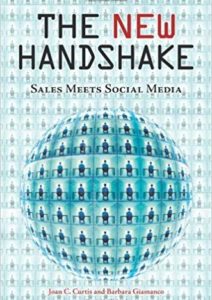A variety of industries use inside sales as a popular high-growth sales model. According to Harvard Business Review, 46 percent of high-growth tech companies are expanding through inside sales, as compared to 21 percent growing through outside sales teams. The reasons for inside sales (SDR/BDR) team growth vary, but one fact is clear: buyers seem to be fine with alternatives to face-to-face meetings. Just from an efficiency standpoint, phone calls, video, or web conferencing options are preferable to buyers so that waste is minimized on their already overfilled calendars.
As companies seek methods of decreasing costs and improving operational efficiencies, technological evolution has made the inclusion of inside sales teams a core component of organizational sales strategies. How much more cost-effective is it for a company to leverage an inside sales team to its fullest? PointClear reports that an outside sales call carries a cost of $308, versus $50 for an inside sales call.
Growth Carries Challenges
With the rapid growth in inside sales comes challenges faced by inside sales leaders for achievement of sales objectives. Such challenges include reducing churn among sales ranks, hiring the right talent for inside sales, speeding up new hire skill ramp time, reduction of deal forecast slippage, improvement of opportunity qualification, and ensuring salesperson skill at having business conversations instead of simply pitching product features. This is according to 2016 research conducted by CSO Insights and ClearSlide.
Two areas of opportunity and competitive advantage are training and coaching.
Two primary factors affecting inside sales teams today:
- High turnover — an annual rate of 20 percent according to the ClearSlide and CSO Insights research.
- Slow ramp time — 33 percent of companies surveyed indicate more than 9 months to ramp up new hires, with fewer than 13 percent of organizations able to bring reps up to speed in less than four months.
Today’s buyers expect to work with salespeople who understand their business, industry trends and competitive challenges. They don’t expect to be the on-the-job training vehicle for your salespeople. If there isn’t a solid plan to get salespeople fully competent quickly, you are leaving them at the mercy of learning by trial and error and wasting buyer’s time. Few executives I’ve ever spoken to have the time or the patience to be educating your sellers in how to sell to them.
Given that SDRs and BDRs are often the first personal experience a buyer has with a company, without proper training, coaching and reinforcement of basic selling skills, these frontline sellers are impeding sales progress, or worse, doing damage to the company brand. And, if it has been reported by CSO Insights that sales leaders see lead volume/quality as more important than skills training and process, I think there is a disconnect. Could this be a factor in why only 46 percent (2016 Sales Comp Survey, Alexander Group) to 67 percent (the Bridge Group) of inside sales reps are achieving quota?
Lack of training and outdated sales approaches lead to a steady stream of no’s, the frustration that breeds, along with the inability to achieve sales objectives, a domino effect. There is a higher turnover among the sales ranks. Some reps will choose to leave on their own. Others will be asked to move on, which hardly seems fair if they haven’t been given the training, coaching and tools they need to succeed in their role.
The Second-Best Thing to Getting a Yes is Getting a Fast No
A top challenge I often hear when talking to sales leaders is that there needs to be more leads and better qualified sales opportunities reported in the pipeline. To which I come back to the importance of a solid training program that is more than a motivational speech at a sales kick-off meeting.
Poorly forecasted sales opportunities and deal slippage in the pipeline can be improved with proper training, coaching and skills reinforcement. Salespeople are notorious for being overly optimistic about when deals will close. The CSO Insights and ClearSlide data showed that 70 percent of reps don’t validate prospect interest during the sales cycle. If salespeople are not effective at qualifying opportunities, and that includes qualifying no’s quickly, the pipeline is muddled and conversion rates are diminished. As Jeff Schmidt, SVP of Global Sales and Services at ClearSlide said, “Qualifying out is a critical practice and will lead to better pipeline conversion and deal visibility.” Without the proper training to help reps understand what constitutes a qualified lead, a lot of “maybes” and “never will buys” end up in the CRM pipeline.
Stop Pitching Product Features, Solve the Buyer’s Problem
Salesforce’s State of Sales report noted that 83 percent of buyers want to work with salespeople “focused on helping achieve their company’s needs, not just making a quick sale.” This is where inside sales teams can score huge competitive wins. Leaders must be willing to let their salespeople drop the script, ditch the pitch and back away from the reliance on demos to sell the product or service.
Inside sales teams can create amazing sales experiences from the very first interaction, and that can only happen if salespeople are taught how to demonstrate to buyers that unlike their competitors, their focus is on helping buyers achieve their goals first and foremost. In the end, the ability for inside sales teams to achieve their goals depends on how they sell, not what they sell.
Pipeliner CRM totally empowers inside sales teams.Get your free trial of Pipeliner CRM now.













Comments